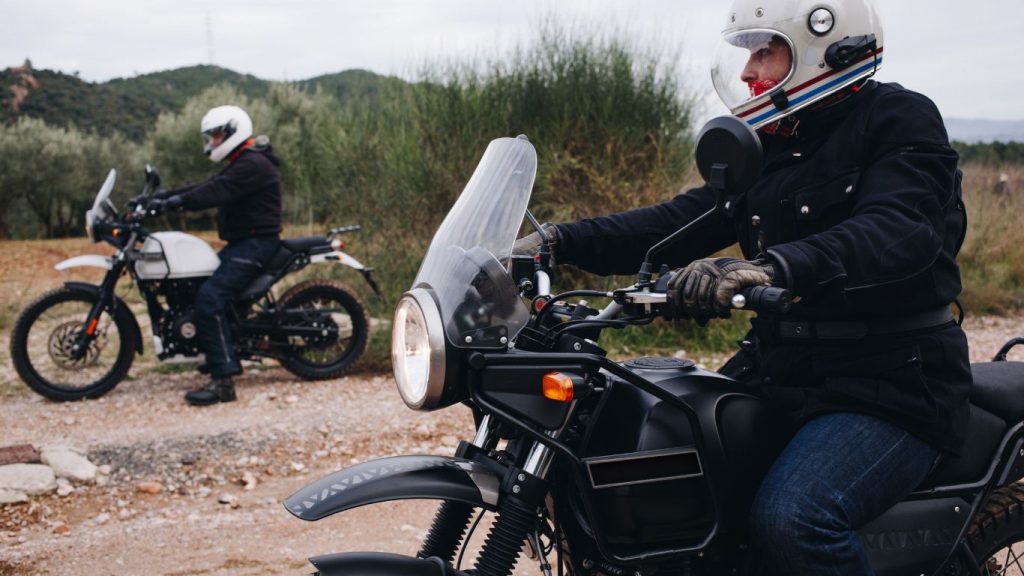Riding a motorcycle can be exhilarating, offering a sense of freedom and adventure like no other. However, it comes with a high level of risk. Motorcycle safety is of paramount importance to ensure that riders enjoy the thrills of the open road without compromising their safety. Whether you’re a beginner or a seasoned rider, mastering the art of motorcycle safety is crucial for a fulfilling and secure riding experience.
1. Wear the Right Gear
The first step to ensuring motorcycle safety is investing in the proper riding gear. Helmets, jackets, gloves, pants, and boots specifically designed for motorcycle riding can significantly reduce the severity of injuries in case of an accident. A sturdy, DOT-approved helmet is the most critical piece of gear, protecting your head and brain from potential harm.
2. Regular Maintenance and Checks
Keeping your motorcycle in top condition is vital for safety. Regular maintenance, including oil changes, brake inspections, tire checks, and overall bike inspections, can prevent accidents caused by mechanical failures. Make sure your lights, horn, brakes, and signals are functioning correctly before hitting the road.
3. Enroll in a Motorcycle Safety Course
New riders should strongly consider enrolling in a motorcycle safety course. These courses offer valuable insights into riding techniques, hazard awareness, and emergency maneuvers. Instructors can provide personalized guidance and help you build a strong foundation of riding skills.
4. Know the Rules of the Road
Understanding and following traffic rules is fundamental to staying safe while riding. Always obey speed limits, road signs, and traffic signals. Additionally, stay updated on specific motorcycle laws in your area, as they may differ from those for cars.
5. Ride Defensively
Assume that other drivers might not see you on the road. Be proactive in anticipating the actions of other vehicles and always have an escape plan in case of unexpected situations. Defensive riding can significantly reduce the risk of accidents caused by the negligence of others.
6. Avoid Riding Under the Influence
Never ride a motorcycle under the influence of alcohol, drugs, or any substances that impair your judgment and coordination. Riding impaired is not only illegal but significantly increases the risk of accidents and severe injuries.
7. Weather Awareness
Weather conditions can have a significant impact on motorcycle safety. Rain, snow, and strong winds can make riding challenging and dangerous. Always check the weather forecast before heading out and consider postponing your ride if conditions are unfavorable.
8. Stay Visible
Visibility is a critical aspect of motorcycle safety. Wear brightly colored gear and reflective elements to enhance your visibility, especially during low light conditions. Always use your headlights, even during the day, to ensure that other motorists can see you.
9. Practice, Practice, Practice
Practice makes perfect. Spend ample time practicing your riding skills in a safe environment. Work on your maneuvers, braking, and cornering techniques to build confidence and improve your overall riding ability.
10. Group Riding Guidelines
If you enjoy group rides, familiarize yourself with group riding etiquette and safety guidelines. Maintain proper spacing between bikes, use hand signals to communicate, and always be aware of the riders around you. Clear communication and coordination are key to safe group riding.
11. Invest in Anti-lock Braking Systems (ABS)
Consider purchasing a motorcycle equipped with ABS. ABS can prevent wheel lockup during sudden or hard braking, providing better control and stability, especially in emergency situations.
12. Know Your Limits
Recognize your riding limits and never push yourself beyond them. If you’re feeling fatigued or overwhelmed, it’s essential to take a break and rest. Riding with a clear mind and body is crucial for safety.
13. Stay Informed and Updated
Stay informed about the latest developments in motorcycle safety and technology. Regularly read safety blogs, attend workshops, and participate in discussions within the biking community to enhance your knowledge and awareness.
14. Stay Calm in Emergencies
In high-stress or emergency situations, it’s crucial to remain calm and collected. Panic can lead to poor decisions. Practice emergency maneuvers and responses, so you’re prepared to handle unexpected situations.
15. Plan Your Routes Wisely
Before embarking on a ride, plan your route and familiarize yourself with the roads you’ll be traveling on. Be aware of potential construction zones, accident-prone areas, and heavy traffic spots, and plan alternative routes if needed.
In conclusion, motorcycle safety is a holistic approach that involves proper gear, knowledge, skills, and responsible riding habits. By embracing these principles and continuously improving your riding abilities, you can minimize risks and enjoy the beauty of the open road with confidence and security. Ride safe, and may every journey be an adventure worth cherishing.

